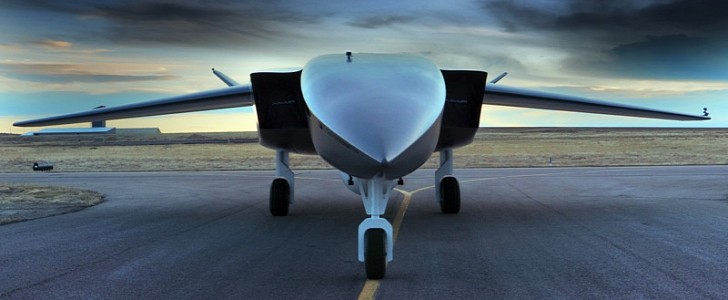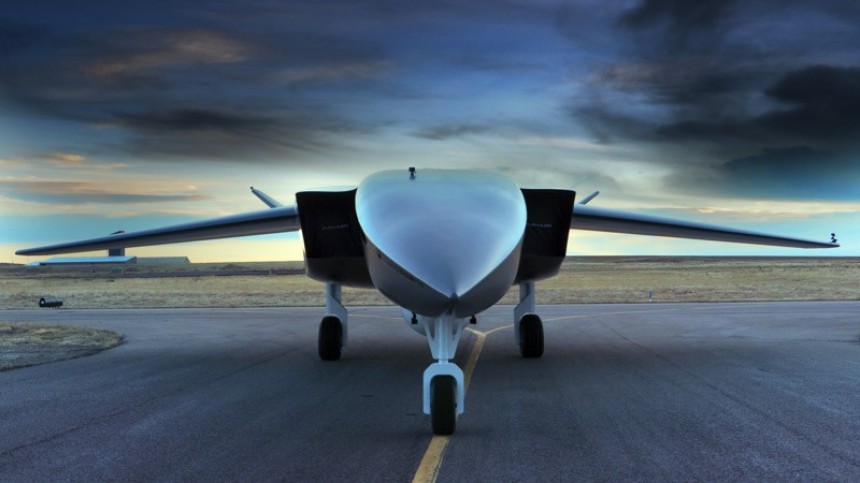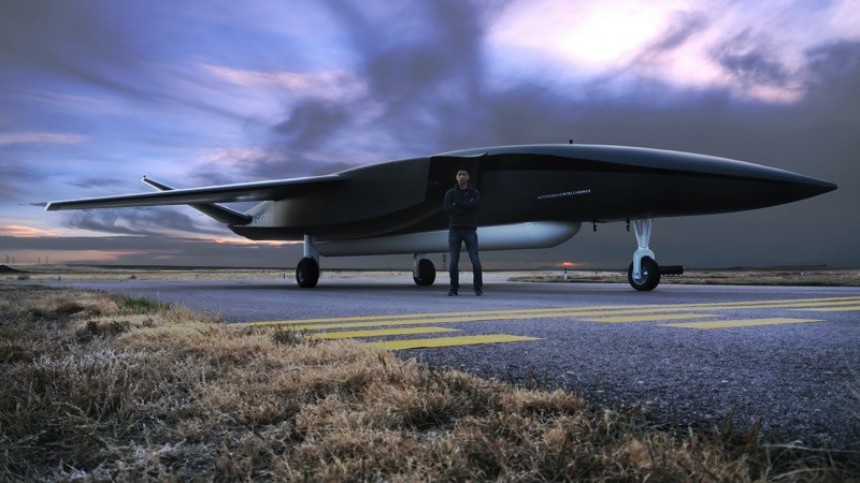December 3, 2020 was the day Aevum, Inc. made history. They rolled out the mighty Ravn X Autonomous Small Satellite Launch Vehicle, described as the world's largest Unmanned Aircraft System (UAS).
The moment was such a high-profile one that even the United States Space Force took part. The event enjoyed great success and was broadcasted online on Aevum's site for anyone interested to watch and admire this beautiful machine.
Weighing in at almost 55,000 lbs (25 metric tons), the Ravn X is genuinely a massive drone. It measures 80 feet (24 meters) in length, reaches up to 18 feet (5.5 meters) high, and has a wingspan of 60 feet (18 meters). And it comes out of Aevum's hands with a stunning, out of this world design, suitable given how its primary mission is to deliver satellites into orbit in a very short time.
How short, may we ask? Well, the Ravn X is set to reach its target in less than 180 minutes from the initial planning, and comes with 24/7-functionality. This translates into a very high-efficiency process in a field where delivery times are measured from few months to several years. The standard payload size sits at 30x30x50 inches, with extended dimensions being available.
Besides its pleasing looks, the Ravn X aircraft boasts a high degree of functionality with its fully reusable launch stages. In other words, its architecture consists of a main fully autonomous first stage powered by two afterburning turbine engines, and two other stages propelled by liquid combustion rocket engines.
The main appeal of this impressive aircraft is its fully autonomous capabilities. To be specific, the Ravn X can function in a self-operational mode from a standby state to the take-off procedures and, after completing its delivery, safe return to the hangar. All can to be done without any human intervention. In other words, it can navigate itself through airports and spaceports in order to taxi, accelerate, and take-off with the purpose of reaching more than 650 mph (1,046 kph) travel speed and over 60,000 feet (18,288 m) altitude.
At that moment, the separation between the first and second stage of the Ravn X assembly occurs, and the stage two component ignites its rocket engines to fly even further from the Earth's surface and reach the void of space. At a certain altitude, the third stage separation happens, and it further continues its journey through space, accelerating to speeds exceeding 17,000 mph ( 27,360 kph) in order to perform orbital insertion.
In the meantime, the first stage reaches ground level, performs an airplane-like landing, and drives itself back to the hangar. All three system stages are reusable, 70 percent right from the start, but aiming for more than 90 percent in the future. Furthermore, all the Ravn X UAS aircraft are connected to each other using Aveum's autonomous launch architecture based on artificial intelligence algorithms. The Ravn X needs no more than a one-mile runway to take off efficiently, and can maneuver itself inside a minimum of 8,000 square feet (743 square meters) hangar.
The autonomous launch architecture network considers vital variables such as weather conditions, air traffic information, orbital destination, payload weight, ground crew schedules, all in the effort to provide seamless and safe operation. Worth mentioning is that all three stages of the Ravn X system function on readily available jet fuel, which helps it being able to operate from any airport in the world with no need for specific infrastructure changes for it to function effectively.
Aevum has gained the U.S. Government's interest and been awarded more than $1 billion in contracts. Moreover, they will take part together with the United States Space Force in the Agile Small Launch Operational Normalizer-45 (ASLON-45) mission, which is projected to launch in October 2021.
Weighing in at almost 55,000 lbs (25 metric tons), the Ravn X is genuinely a massive drone. It measures 80 feet (24 meters) in length, reaches up to 18 feet (5.5 meters) high, and has a wingspan of 60 feet (18 meters). And it comes out of Aevum's hands with a stunning, out of this world design, suitable given how its primary mission is to deliver satellites into orbit in a very short time.
How short, may we ask? Well, the Ravn X is set to reach its target in less than 180 minutes from the initial planning, and comes with 24/7-functionality. This translates into a very high-efficiency process in a field where delivery times are measured from few months to several years. The standard payload size sits at 30x30x50 inches, with extended dimensions being available.
The main appeal of this impressive aircraft is its fully autonomous capabilities. To be specific, the Ravn X can function in a self-operational mode from a standby state to the take-off procedures and, after completing its delivery, safe return to the hangar. All can to be done without any human intervention. In other words, it can navigate itself through airports and spaceports in order to taxi, accelerate, and take-off with the purpose of reaching more than 650 mph (1,046 kph) travel speed and over 60,000 feet (18,288 m) altitude.
At that moment, the separation between the first and second stage of the Ravn X assembly occurs, and the stage two component ignites its rocket engines to fly even further from the Earth's surface and reach the void of space. At a certain altitude, the third stage separation happens, and it further continues its journey through space, accelerating to speeds exceeding 17,000 mph ( 27,360 kph) in order to perform orbital insertion.
The autonomous launch architecture network considers vital variables such as weather conditions, air traffic information, orbital destination, payload weight, ground crew schedules, all in the effort to provide seamless and safe operation. Worth mentioning is that all three stages of the Ravn X system function on readily available jet fuel, which helps it being able to operate from any airport in the world with no need for specific infrastructure changes for it to function effectively.
Aevum has gained the U.S. Government's interest and been awarded more than $1 billion in contracts. Moreover, they will take part together with the United States Space Force in the Agile Small Launch Operational Normalizer-45 (ASLON-45) mission, which is projected to launch in October 2021.












